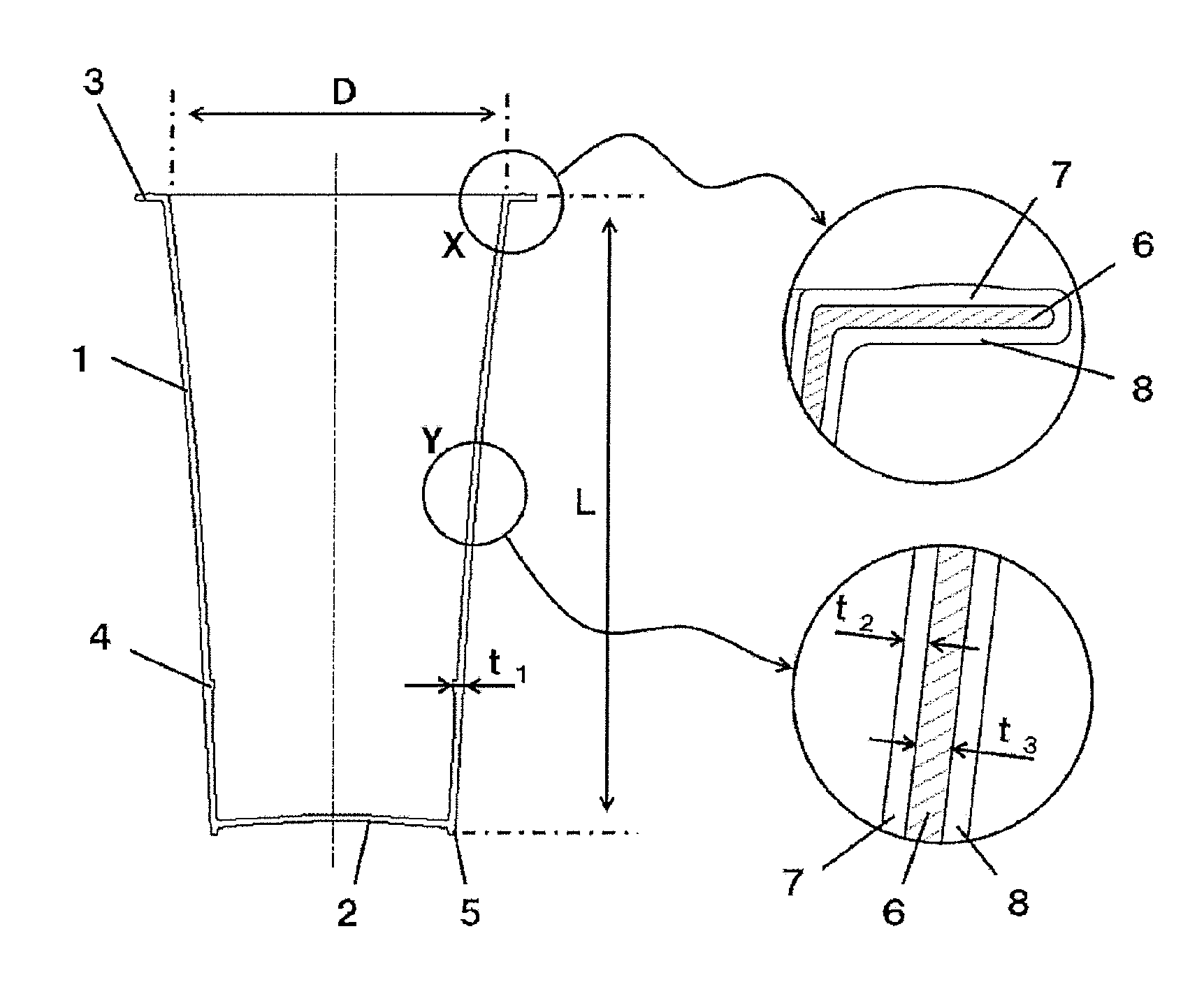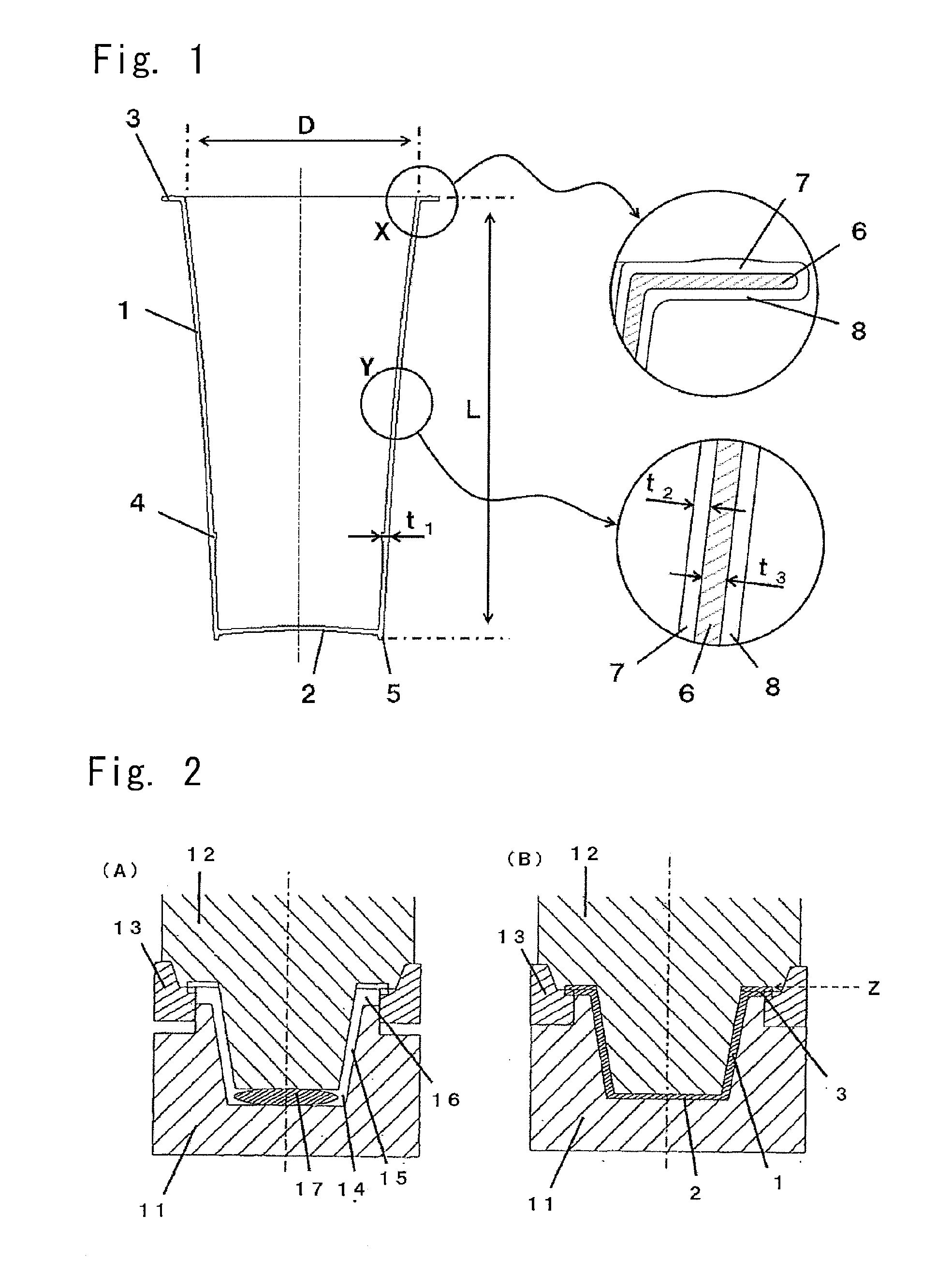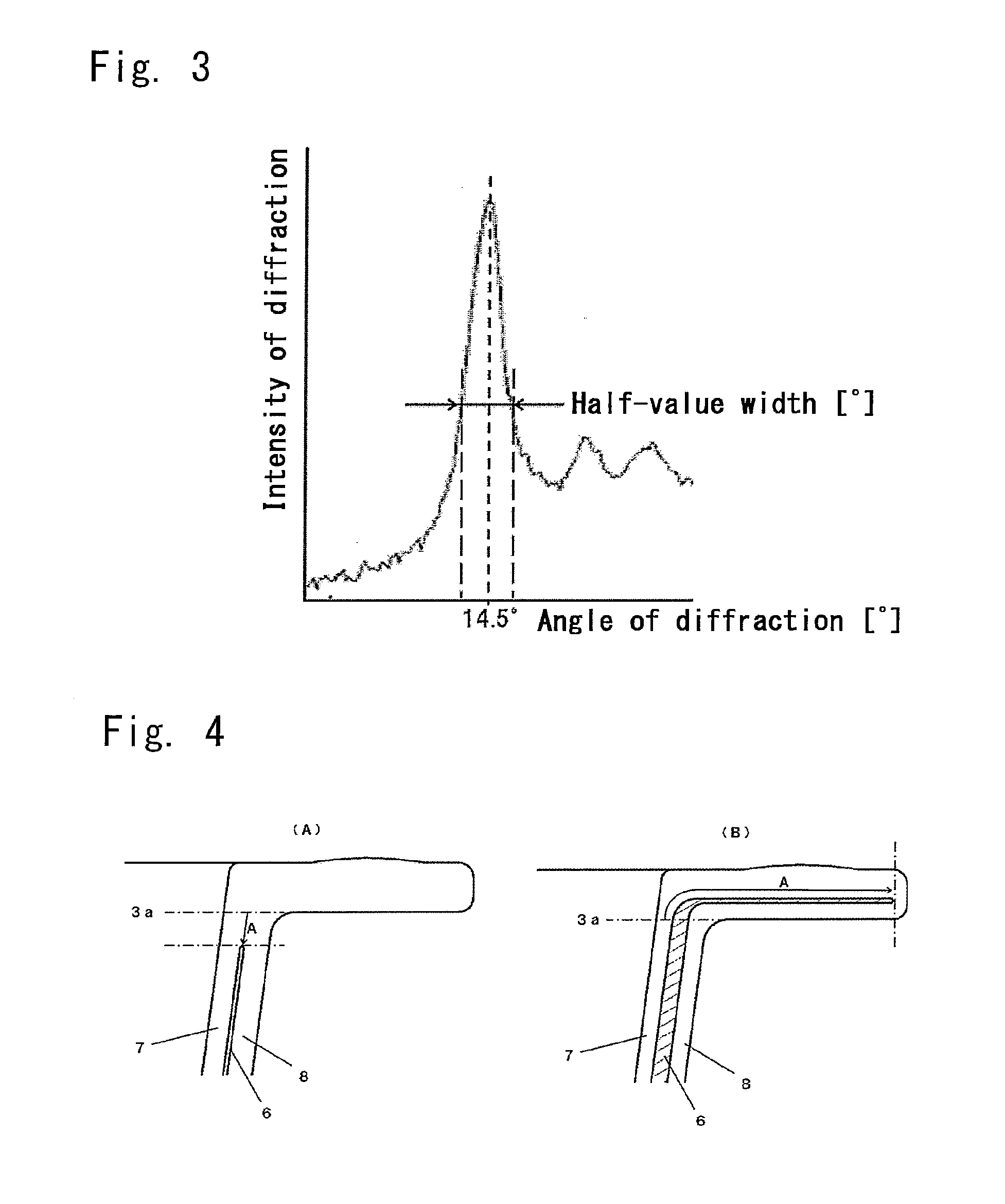Cup-type container and method of forming the same
a container and cup-type technology, applied in the field of cup-type containers, can solve the problems of high anisotropy, insufficient heat resistance, and anisotropy in the molecular orientation, and achieve excellent heat resistance, excellent gas-barrier properties, excellent transparency and dimensional precision
- Summary
- Abstract
- Description
- Claims
- Application Information
AI Technical Summary
Benefits of technology
Problems solved by technology
Method used
Image
Examples
example 1
[0132]A random polypropylene resin (MFR 30 g / 10 min) was fed into a φ65 extruder (L / D=30), extruded through a nozzle of an outlet diameter of φ27 under the conditions of an extruder temperature of 230° C., die temperature of 230° C. and a resin pressure of 9.0 MPa, and was cut to obtain a molten resin mass. The molten resin mass was fed into a compression metal mold maintained at 18° C., compression-formed while defining, in advance, part of the flange, varying the thicknesses of the body portion of the container and of the portion that forms the bottom and controlling the forming rate to be 100 mm / sec at a point 5 mm before the point where the forming was completed to thereby obtain a single-layer cup-type container of a sectional structure as shown in FIG. 5(A) having a ratio L / D=1.6, a thickness in the body portion of the container of 1.0 to 1.6 mm, a container height of 95 mm, a container flange outer diameter of 59.3 mm, a volume of 120 cc and a weight of 12.8 g.
[0133]Next, the...
example 2
[0134]As a resin for forming inner and outer layers, a random polypropylene resin (MFR 30 g / 10 min) was fed into the 065 extruder (L / D=30), and was extruded under the conditions of an extruder temperature of 230° C. and a resin pressure of 9.0 MPa.
[0135]Further, an ethylene-vinyl alcohol copolymer resin was fed into a φ30 extruder (L / D=25) and was extruded under the conditions of an extruder temperature of 230° C. and a resin pressure of 30.0 MPa.
[0136]As an adhesive resin for adhering the intermediate layer to the inner and outer layers, further, a modified polypropylene resin was fed into a φ30 extruder (L / D=25) and was extruded under the conditions of an extruder temperature of 230° C. and a resin pressure of 22.0 MPa.
[0137]The inner and outer layers, intermediate layer and adhesive resin were met together in a die heated at 230° C., extruded through a nozzle of an outlet diameter of φ27, and was cut to obtain a multi-layer molten resin mass.
[0138]The multi-layer molten resin mas...
example 3
[0140]A random polypropylene resin (MFR 22 g / 10 min) was fed into a φ75 extruder (L / D=30), extruded through a nozzle of an outlet diameter of φ27 under the conditions of an extruder temperature of 220° C., a die temperature of 220° C. and a resin pressure of 1.2 MPa, and was cut to obtain a molten resin mass. The molten resin mass was compression-formed under the same forming conditions as those of Example 1 except that the temperature was 20° C. in the compression metal mold to which the molten resin mass was fed, and the forming rate was 300 mm / sec at a point 5 mm before the point where the forming was completed. There was obtained a single-layer cup-type container of the same shape as that of Example 1, which was then measured and evaluated in the same manner as in Example 1.
PUM
| Property | Measurement | Unit |
|---|---|---|
| thickness | aaaaa | aaaaa |
| thickness | aaaaa | aaaaa |
| height | aaaaa | aaaaa |
Abstract
Description
Claims
Application Information
 Login to View More
Login to View More - R&D
- Intellectual Property
- Life Sciences
- Materials
- Tech Scout
- Unparalleled Data Quality
- Higher Quality Content
- 60% Fewer Hallucinations
Browse by: Latest US Patents, China's latest patents, Technical Efficacy Thesaurus, Application Domain, Technology Topic, Popular Technical Reports.
© 2025 PatSnap. All rights reserved.Legal|Privacy policy|Modern Slavery Act Transparency Statement|Sitemap|About US| Contact US: help@patsnap.com



